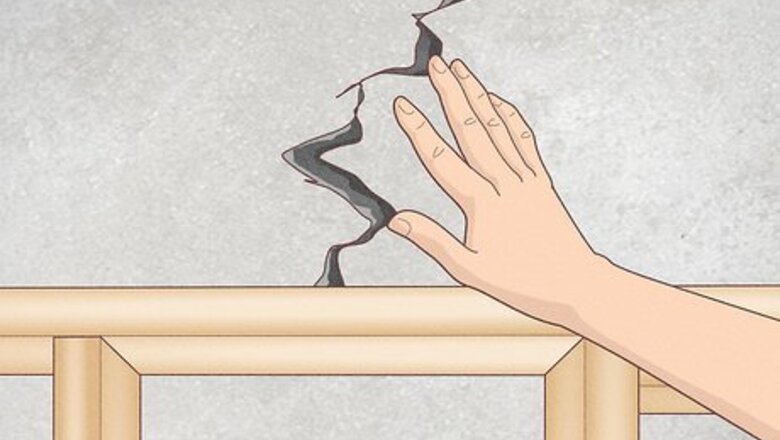
views
X
Research source
This can make it tough to find all of their possible entry points, but don't worry—we've got you covered. Read on to find out how to identify possible mice entries all over your house and how to patch those areas to keep those little critters outside where they belong.
Check your foundation for cracks.

Foundation cracks are the most common way mice get into homes. Remember that even a very small crack can provide an entrance for mice. They can also gnaw away concrete to widen a crack that was previously too small for them to fit through. To prevent future entries, close up even the smallest cracks, especially those near signs of mouse activity. You can fix small cracks yourself with caulk or concrete. Your local home improvement store will have the materials you'll need. If you see larger cracks or gaps, you might call a contractor out to have a look. They can inspect the area for structural damage that should be fixed as soon as possible before it leads to more costly repairs.
Look for cracks in your basement or crawl space.
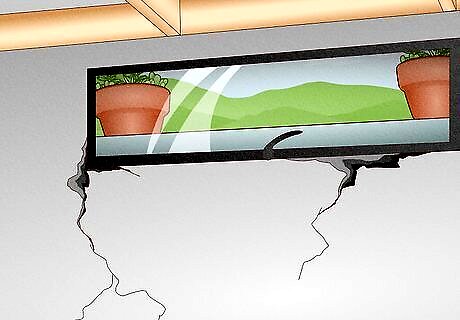
Basements are also popular nesting sites for mice. If you don't go down into your basement or crawl space very often, go down and look for nesting materials or mouse droppings accompanied by the smell of ammonia. That's a sure sign mice have set up residence down there. To find cracks efficiently, wait until nightfall and have someone shine a flashlight along the wall of your basement or crawl space while you walk around outside. Anywhere you can see the light shining through, you've got a crack that needs to be filled. Stuff steel wool into cracks and gaps, then seal them off with concrete, caulk, or any commercial sealant.
Clear food and debris from your yard.
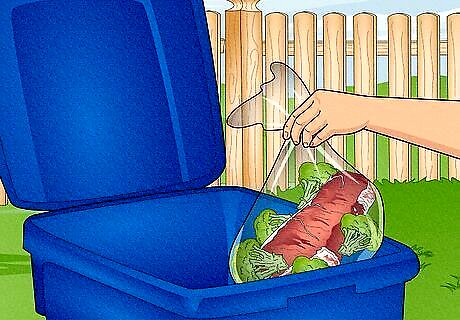
Eliminate potential food sources for mice around your property. Most mice have many different food sources. They typically live outside your home and go to many different places to feed. If you don't have any food readily available in your yard, they won't be interested in going onto your property. Here are some things you can do: Trim vegetation close to your home. Remove pet food and water at night. Keep trash cans closed tightly and away from the home. Remove and properly dispose of any junk. Raise woodpiles at least 30 cm (12 in) off the ground.
Look for cracks in your exterior walls.

Start at the bottom of the wall and work your way up. Low-level gaps are easier for mice to enter than those higher up. Any crack or gap is a possible entry point. Look for signs of mice activity, though (gray smears or greasy streaks, an ammonia smell, droppings)—that way you'll know which spots they frequent. Wait to seal cracks until you haven't seen any signs of mice activity for at least a couple of months. If you trap them inside, you could end up with dead mice inside your walls. Use steel wool or tin to stuff the gaps before sealing them so the mice won't be able to gnaw through and get back in.
Fill gaps between pipes and the walls.
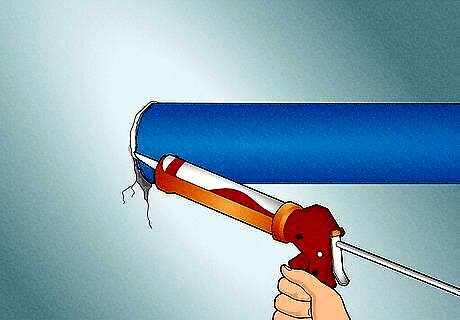
Gaps around pipes are a favorite way for mice to enter homes. Inspect areas where pipes come into and out of your home. Any space between the wall and the side of the pipe is a space where mice could potentially enter. Use scrap metal to close the gap around the pipe at the wall, then seal the metal in place with caulk or another commercial sealant. If you have open pipe ends outside, cover them with wire mesh to keep mice and other pests from traveling into your home through the pipes.
Close space around cables and wires.

Contractors running cables and wires typically don't block these gaps. Check these spots on both the inside and the outside of your home. Mice can enter your home through the outside, but they can also use gaps in interior walls to access other parts of your house once they're in the walls. Surround cables and wires with steel wool to block mice from using the gaps, then use expanding foam or a similar sealant to hold the steel wool in place without putting undue pressure on the cables or wires.
Screen off vents and drains.

Metal screens keep pests out while allowing vents and drains to function. Check any vents or drains, such as those in the attic or in the laundry room. If they're open, fit a fine mesh screen to the inside of the outer vent or drain cover. Make sure it covers the entire opening.
Check the seal on your doors.
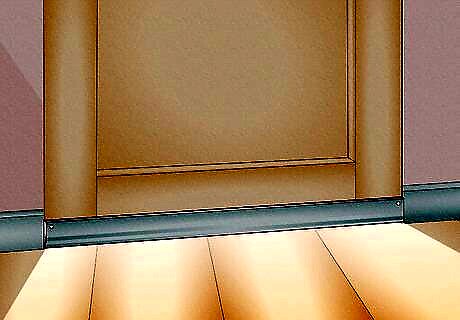
Mice can enter through closed doors if they don't seal properly. If you can see light through the sides of the door when it's closed, mice can definitely come through that way. You might also blow a fan on one side of the door and see if you can feel the air coming through on the other side. That's a sign that you have a gap in the door that mice could use to enter your home. If the gap is larger than 4 millimetres (0.16 in), install door brush strips or door sweeps on the bottom of the door. Seal any small gaps in the frame around the door with expanding-foam insulation.
Make sure windows fit tightly.
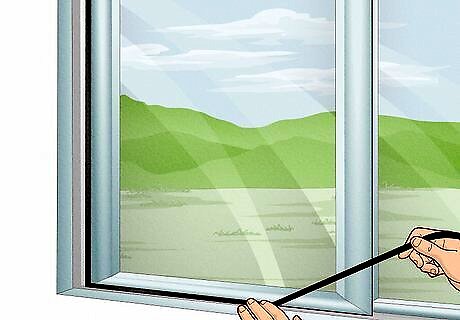
Greasy streaks or droppings indicate mice are getting in that way. Install weather stripping on all of your windows to ensure a tight seal. Cover any edges with metal if they could be gnawed through. For prevention, go ahead and patch up gaps and cracks even if you don't see any signs that mice have been using that entry point. Repair screens on your windows if they have any holes or are damaged, especially if you open your windows during warmer months. Make sure the screen itself fits tightly in the window.
Clean up food in the kitchen.

Mice looking for food are likely to end up in your kitchen. Look in cabinets and drawers as well as under and behind appliances for mice activity. If you see any droppings, nesting material such as shredded paper, or greasy gray streaks, take action. Remove everything from the area and clean thoroughly to eliminate all signs of mice activity. Seal any gaps or cracks in your cabinets, as well as between the cabinets and the walls. Stuff larger gaps with steel wool. Use pieces of tin cut from cans to patch larger holes and gaps. Check for gaps around the gas and water connections as well. Even in new construction, the contractors who install these don't usually pay much attention to the space around these pipes. Clean up spills and crumbs right away and avoid leaving food out on counters. Store food in airtight glass or metal containers so it won't potentially attract mice and other pests.
Remove clutter from your garage.

Attached garages are highly attractive and easily accessible to rodents. Garage doors don't typically fit as tightly as other doors, and there's not really much you can do about that. The best thing you can do in your garage is remove trash and food so it's less attractive to rodents. If the mice outside don't smell anything enticing in your garage, they won't have any reason to go in there. Try to store your trash cans somewhere on the exterior of your home, rather than in your garage. If you have to keep them in your garage, get a metal container that will hold your trash cans and make sure everything's sealed tight. If you have crafting or building materials, such as wood and paper, in your garage, keep them in metal containers. These are prime nesting materials that attract mice. Check for cracks along the walls of your garage that could allow entry into the house and seal them up.
Check your roof for gaps.
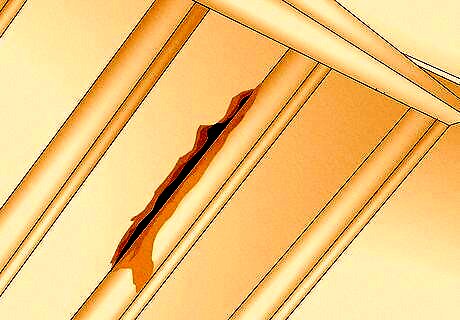
Attics and roof spaces are also ideal nesting sites. Mice tend to build nests in secluded areas without a lot of human activity—and attics usually qualify. Mice also tend to find a lot of nesting materials in the attic, especially if you use the area for storage. In addition to nesting sites, be on the lookout for signs that mice are entering your home through openings around the roof. Clean the area thoroughly to get rid of all signs of rodent activity. These smells will continue to attract other mice Fill in gaps and crevices with steel wool and cover them with concrete or caulk to seal them off.




















Comments
0 comment